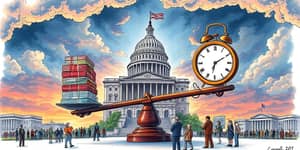
As remote work becomes more than just a temporary adjustment, it is reshaping the geography of where people live and how they build community. The choices individuals make today about where to settle are being guided by new priorities: cost, lifestyle, and proximity to loved ones. This article explores how these forces are transforming urban migration patterns, and offers practical guidance for both individuals and policymakers navigating this evolving landscape.
The rise of remote work has unleashed what can best be described as a once-in-a-generation migration wave. With over 32.6 million Americans working outside traditional offices, the planet is witnessing a profound shift in living arrangements. No longer tethered to city centers by the daily commute, workers are reimagining their communities and climates of choice.
Across the globe, similar trends emerge: knowledge workers seeking balance, families prioritizing space, and digital nomads chasing adventure. The result is a broadened geographical dispersal pattern that challenges long-held assumptions about urban density and regional development.
Several intertwined factors are motivating this new wave of movers. Understanding these drivers is essential for making informed decisions and crafting supportive policies.
These motivations combine to create a mosaic of migration patterns: nearly half of remote workers relocating in 2025 are heading to suburban areas, while 29% are choosing urban settings and 22% rural locales.
As populations redistribute, both cities and suburbs face fresh opportunities and challenges. Urban centers are evolving into innovation hubs, with a surge in gig economy roles and high-skilled positions in sectors like AI, data science, and creative services. Yet this transformation brings concerns about job security and equitable access to benefits.
Suburban and rural communities are experiencing revitalization. Increased demand for local services, from co-working spaces to coffee shops, is fostering economic growth. However, infrastructure must keep pace with the influx, including high-speed internet, transportation links, and community amenities.
Deciding where to live in a flexible work era requires balancing professional needs, personal values, and financial realities. Consider these actionable steps:
By taking a thoughtful, evidence-based approach, remote workers can find environments that fuel both well-being and productivity.
Governments and local administrators play a pivotal role in shaping the future of migration-driven growth. To harness the benefits and mitigate challenges, policymakers should focus on:
These measures will support sustainable growth, foster social cohesion, and enable communities to thrive amidst ongoing mobility.
The forward march of technology and changing work paradigms has unlocked unprecedented freedom. As we move into the next decade, the ability to choose where and how we live will become a cornerstone of personal fulfillment and economic resilience.
By embracing flexible work opportunities, both individuals and societies can break free from outdated models and reimagine community life. Whether it’s a family seeking greener pastures, a young professional chasing innovation, or a retiree craving tranquility, the evolving migration tapestry offers the chance to craft lives aligned with core values.
Ultimately, the story of urban migration in the flexible work era is one of possibility. With thoughtful planning, adaptive policies, and a spirit of collaboration, we can transform shifting patterns into pathways for shared prosperity. The future of mobility beckons—let us navigate it together with vision, compassion, and a steadfast commitment to inclusive growth.
References













